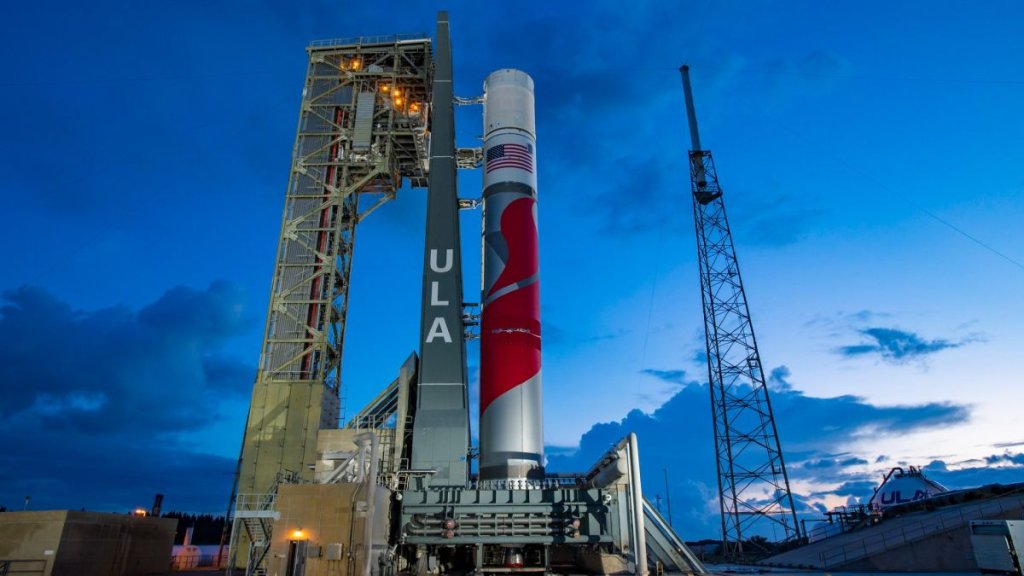
ULA calls off critical Vulcan Centaur rocket test on launch pad due to engine ignition delay (Image Credit: Space.com)
The United Launch Alliance called off the first-ever engine test of its new Vulcan Centaur rocket on the launch pad in Florida on Thursday (May 25) due to a technical issue on the booster.
The Vulcan Centaur rocket engine test, called a Flight Readiness Firing, was scheduled for 6 p.m. EDT (2200 GMT) at Space Launch Complex 41 at Cape Canaveral Space Force Station in Florida. But two hours before the test, United Launch Alliance (ULA) announced it was standing down.
“During the countdown, the team observed a delayed response from the booster engine ignition system that needs further review prior to proceeding with the flight readiness firing,” ULA officials wrote in a Twitter update.
The Vulcan Centaur rocket’s first stage was then rolled back to its Vertical Integration Facility hangar for further review.
“The team will continue to review data and determine when Vulcan Rocket can roll back to the pad to conduct the flight readiness firing,” ULA wrote in a follow-up update.
Related: Vulcan Centaur rocket: The space workhorse of tomorrow
ULA CEO and President Tory Bruno said on Twitter that there appears to be an issue with Blue Origin-built BE-4 engines that power the Vulcan Centaur’s first stage. “We test the BE4 ignition system during the count,” Bruno wrote on Thursday. “Timing and response doesn’t look right. Need to understand it.”
ULA has been working toward a launch pad static fire test of the Vulcan Centaur rocket throughout May. Last week, the company rolled the rocket to the pad for a test as early as Monday (May 22) , only to roll it back to its hangar for additional tests. It returned to the pad by Wednesday for Thursday’s planned test.
If Vulcan’s eventual static fire and wet dress rehearsal go smoothly, the rocket’s first launch will be its next major milestone. Bruno has previously indicated sometime in June or July as Vulcan’s earliest likely launch date, with launch windows available 4 to 5 days every month. That timeline depends on the success of the upcoming static fire test.
ULA previously completed a successful tanking test on the company’s new Vulcan on May 12, filling the rocket with over a million pounds of fuel during the test. ULA engineers then evaluated the fueling test results against Vulcan’s design expectations.
Two days after the successful tanking, Bruno indicated in a May 15 tweet that the tests were “good,” but that teams would be making some parameter adjustments ahead of Vulcan’s first static fire. That milestone moved Vulcan one step closer to its first launch, with only a static test firing of the engines and wet dress rehearsal left to validate the vehicle.

The rocket’s main booster BE-4 engines use liquified natural gas (LNG) and liquid oxygen for fuel, and will be able to produce over half a million pounds of thrust at liftoff. Vulcan’s Centaur V second stage RL10 engines are powered using liquid hydrogen and liquid oxygen.
The 202-foot (62-meter) Vulcan Centaur will be capable of lifting 7.7 tons (7 metric tonnes) of payload to geostationary orbit, over 22,000 miles (36,000 km) above the Earth. The rocket was designed to replace ULA’s veteran Atlas V and Delta IV launch vehicles that have been in service for two decades.
Already, NASA has added Vulcan to its lineup of rockets for future missions. Amazon has also contracted ULA for 38 Vulcan launches to support the deployment of its Project Kuiper communications satellite constellation.
Editor’s note: This story was updated on May 26 to reflect that cancellation of ULA’s Vulcan Centaur rocket static fire test on May 25. Space.com Editor-in-Chief Tariq Malik contributed to this report.








